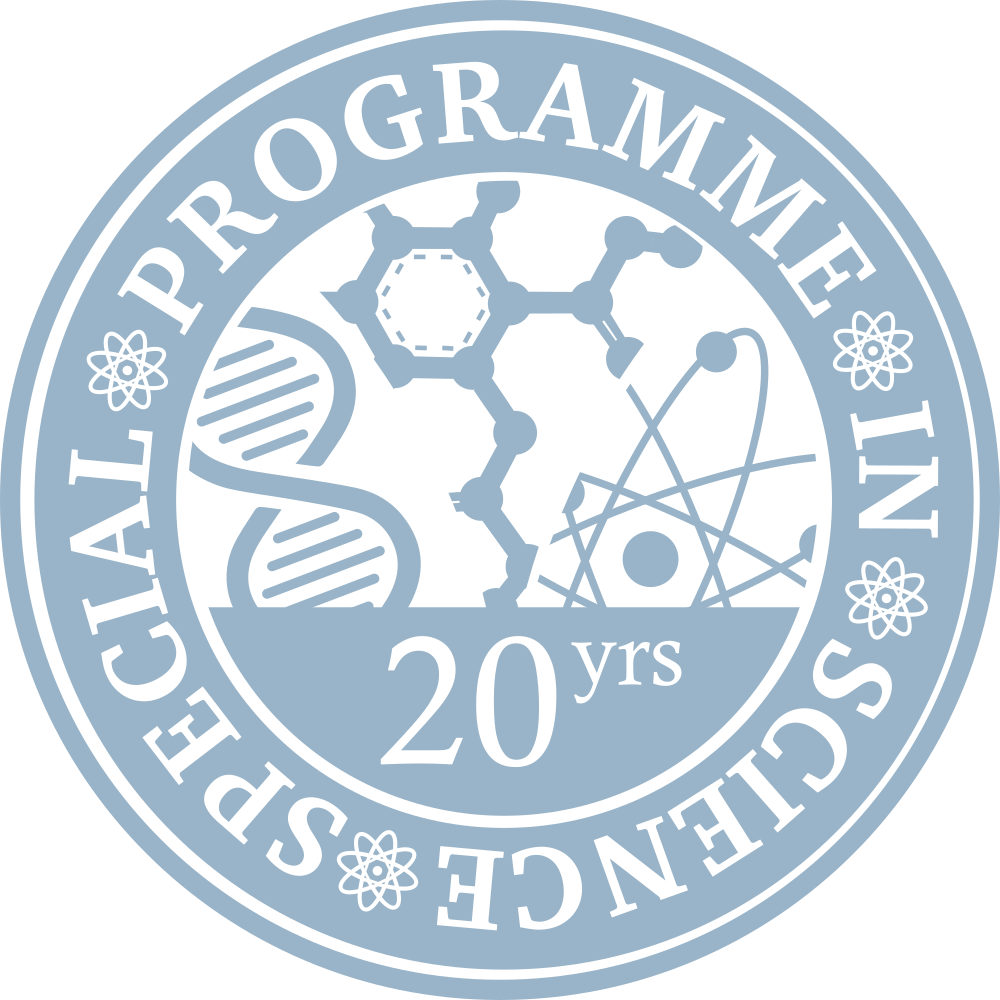#
Expanding Universe in the Spacetime Framework
#
7.4 Expanding Universe in the Spacetime framework
Go to Activity 1.
#
7.4.1 Flat space (no curvature)
Suppose the space is flat or Euclidean, the metric of space is given by
\begin{equation}
dl^{2}=dx^{2}+dy^{2}+dz^{2}
\end{equation}In a homogeneous, isotropic, size-changing Universe, one will see the galaxies moving radially away/towards us equally in all directions. It is thus apt to express the metric in spherical coordinates (R,\theta,\phi):
\begin{equation}
dl^{2}=dR^{2}+R^{2}d\theta^{2}+R^{2}\sin^{2}\theta d\phi^{2}
\end{equation}Looks familiar?
We are now going to do something that requires your brain to stretch a bit..
First, we allow R to vary with time, i.e. R=R(t). This will mean that if we were to measure the distance between 2 points (\Delta R), the value will depend on when you measure.
Since the space is homogeneous and isotropic, the change in distance is the same anywhere and in any directions. This allows us to think of the change of \Delta R to be due to the scale (size) of the entire system that changes. We then define a time-dependent scale factor S(t) and a time-independent "comoving" coordinate r where
\begin{equation}
R(t)=r\,S(t)
\end{equation}Note that r,\theta and \phi are not functions of time.
This means that if we use (r,\theta,\phi) to label positions of
objects, then these coordinate points will not change in time even
if the space expands or contract. Using Eq.(
Try it Yourself!
In the space below, illustrate the above idea by draw 2 diagrams, one at time t_{1} and the other at t_{2}. Each diagram should contain 2 points P and Q. P has the same (r,\theta,\phi) coordinates in t_{1} and t_{2}. Similarly for Q.
Putting Eq.(
\begin{equation}
dl^{2}=S(t)^{2}\left(dr^{2}+r^{2}d\theta^{2}+r^{2}\sin^{2}\theta d\phi^{2}\right)
\end{equation}Eq.(
Space need not be flat.
If one allows space to be curved, yet maintaining universal homogeneity, one may have (i) flat (zero curvature), (ii) spherical (constant positive curvature) or (ii) hyperbolic (constant negative curvature) space.
#
7.4.2 Spherical space (positive curvature)
A 2-sphere is the 2D surface of a 3D ball. It is defined by the equation
x^{2}+y^{2}+z^{2}=R^{2}where R is the radius of the ball/sphere. The metric for the 2 sphere is
ds^{2}=dR^{2}+R^{2}d\theta^{2}+R^{2}\sin^{2}\theta d\phi^{2}=R^{2}d\theta^{2}+R^{2}\sin^{2}\theta d\phi^{2}Note that dR=0 since R is a constant here.
Now extend your imagination to think of the surface of a 4-dimensional ball. This surface is a curved 3D space which we call the 3-sphere. Being one dimension higher than the 2-sphere, the equation for the 3-sphere is
\begin{equation}
w^{2}+x^{2}+y^{2}+z^{2}=S^{2}
\end{equation}where S is a constant in space (but not a constant in time). Let R^{2}=x^{2}+y^{2}+z^{2}. In this case R is not a constant.
To find the space metric, first we work out the differentials
\begin{align*}
w^{2} & =S^{2}-R^{2}\\
2wdw & =0-2RdR\\
w^{2}dw^{2} & =R^{2}dR^{2}\\
dw^{2} & =\frac{R^{2}}{S^{2}-R^{2}}dR^{2}
\end{align*}The metric of the 3-sphere is
\begin{align}
dl^{2} & =dw^{2}+dx^{2}+dy^{2}+dz^{2}\nonumber \\
& =\frac{R^{2}dR^{2}}{S^{2}-R^{2}}+dR^{2}+R^{2}d\theta^{2}+R^{2}\sin^{2}\theta d\phi^{2}\\
& =S^{2}\left(\frac{dr^{2}}{1-r^{2}}+r^{2}d\theta^{2}+r^{2}\sin^{2}\theta d\phi^{2}\right)
\end{align}where in the last step we had applied Eq.(
#
7.4.3 Hyperbolic space (negative curvature)
The space of an isotropic and homogeneous negatively curved space takes on a surface of a hyperboloid, whose equation is given by
w^{2}-x^{2}-y^{2}-z^{2}=S^{2}The metric of the 3-hyperboloid is
dl^{2}=-dw^{2}+dx^{2}+dy^{2}+dz^{2}Using a similar treatment (as we did for the spherical case), the metric for a hyperbolic space is
\begin{equation}
dl^{2}=S^{2}\left(\frac{dr^{2}}{1+r^{2}}+r^{2}d\theta^{2}+r^{2}\sin^{2}\theta d\phi^{2}\right)
\end{equation}Try it Yourself!
Derive Eq.(
#
7.4.4 Friedmann-Lemaitre-Robertson-Walker (FLRW) metric
Putting the above altogether, allowing S to change with time, and adding the time component, the spacetime metric for an expanding Universe is
\begin{equation}
ds^{2}=-c^{2}dt^{2}+S(t)^{2}\left(\frac{dr^{2}}{1-kr^{2}}+r^{2}d\theta^{2}+r^{2}\sin^{2}\theta d\phi^{2}\right)
\end{equation}where
k=\begin{cases}
\begin{array}{c}
+1\\
0\\
-1
\end{array} & \begin{array}{c}
,\;\text{positively curved space}\\
,\;\text{flat space}\\
,\;\text{negatively curved space}
\end{array}\end{cases}Eq. (
#
7.4.5 The Cosmological Redshift
Consider light from a galaxy situated at a r_{1}. Let us narrow down to see just two photons, emitted one after the other at times t_{1} and t_{1}+1/f_{1}, with f_{1} being the frequency of the photon emitted. Assume the photons travel freely across the intergalactic distance to us, reaching our detectors at times t_{0} and t_{0}+1/f_{0}. Photons propagating in an isotropic and homogeneous Universe are described by
\begin{equation}
ds^{2}=c^{2}dt^{2}-S(t)^{2}\frac{dr^{2}}{1-kr^{2}}=0
\end{equation}where S(t) is the cosmological scale factor characterizing the size of the Universe as it expands. For the first and the second photon, we have respectively
\begin{equation}
c\int_{t_{1}}^{t_{0}}\frac{dt}{S(t)}=\int_{0}^{r_{1}}\frac{dr}{\sqrt{1-kr^{2}}}
\end{equation}and
\begin{equation}
c\int_{t_{1}+1/f_{1}}^{t_{0}+1/f_{0}}\frac{dt}{S(t)}=\int_{0}^{r_{1}}\frac{dr}{\sqrt{1-kr^{2}}}.
\end{equation}Since the RHS of the equations are the same, we can equate the LHS of both equations,
\begin{align}
\int_{t_{1}}^{t_{0}}\frac{dt}{S(t)} & = \int_{t_{1}+1/f_{1}}^{t_{0}+1/f_{0}}\frac{dt}{S(t)}\nonumber \\
& = \int_{t_{1}+1/f_{1}}^{t_{0}}\frac{dt}{S(t)}+\int_{t_{0}}^{t_{0}+1/f_{0}}\frac{dt}{S(t)}\nonumber \\
& = \int_{t_{1}}^{t_{0}}\frac{dt}{S(t)}-\int_{t_{1}}^{t_{1}+1/f_{1}}\frac{dt}{S(t)}+\int_{t_{0}}^{t_{0}+1/f_{0}}\frac{dt}{S(t)}\nonumber \\
\int_{t_{1}}^{t_{1}+1/f_{1}}\frac{dt}{S(t)} & = \int_{t_{0}}^{t_{0}+1/f_{0}}\frac{dt}{S(t)}
\end{align}The time interval(s) between the first and second photons emitted (and received) is very short and it will be reasonable to assume that the Universe do not expand much in that short time. We can therefore assume S to be constant within the limits of integration and take it out of the integration sign(s). This gives
\begin{equation}
\frac{1}{S(t_{1})}\frac{1}{f_{1}}=\frac{1}{S(t_{0})}\frac{1}{f_{0}}
\end{equation}Finally we define the cosmological redshift z by
\begin{equation}
1+z=\frac{\lambda_{0}}{\lambda_{1}}=\frac{f_{1}}{f_{0}}=\frac{S(t_{0})}{S(t_{1})}
\end{equation}